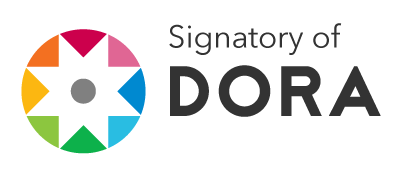The pragmatics of emoji in awareness campaigns
DOI:
https://doi.org/10.62701/revsocial.v13.5449Keywords:
hiAbstract
This article explores the pragmatic functions of emoji in online awareness campaigns within the framework of digital communication, a key element of contemporary capitalism. Emojis, often perceived as decorative symbols, serve crucial communicative roles, such as expressing emotions, enhancing text, and shaping meaning through context. Drawing from Austin’s Speech Act Theory and Brown and Levinson’s Politeness Theory, the study analyzes five English-language awareness campaigns produced between 2014 and 2024. These campaigns use emojis strategically to reinforce messages and engage audiences across social media platforms. The article aims to contextualize emoji in digital discourse, outline their communicative potential in hybrid messages (text, audio, image), and show how they function pragmatically within structured speech acts. The research contributes to the broader field of linguistic studies by highlighting emoji as significant tools in virtual communication, particularly in digital campaigns that seek to raise awareness on social issues and foster public engagement
Downloads
Global Statistics ℹ️
|
238
Views
|
80
Downloads
|
|
318
Total
|
|
References
Austin, J. L. (1962). How to Do Things with Words. 1. Oxford University Press.
Brown, P., & Levinson, S. C. (1987). Politeness: Some universals in language usage. Cambridge. DOI: https://doi.org/10.1017/CBO9780511813085
Cavalcanti, M. C. C. (2013). Campanha de conscientização ambiental: prática social e discursiva na modernidade tardia. Maria Clara Catanho Cavalcanti.
Danesi, M. (2017). The Semiotics of Emoji: The rise of visual language in the age of the internet. Bloomsbury. DOI: https://doi.org/10.5040/9781474282024
Emojipedia (2024). Emojipedia. https://emojipedia.org
Evans, V. (2017). The Emoji Code: The Linguistics Behind Smiley Faces and Scaredy Cats. Picador.
Giannoulis, E. y Wilde, L. R. A. (Org.) (2020). Emoticons, Kaomoji, and Emoji: The Transformation of Communication in the Digital Age. Routledge. DOI: https://doi.org/10.4324/9780429491757
Gil, A. C. (2002). Como elaborar projetos de pesquisa. Atlas.
Leffa, V. J. (Org.) (2006). Pesquisa em Linguística Aplicada. EDUCAT.
Padilla, X. A. (2024). Los emojis en WhatsApp: funciones pragmático-discursivas y multimodalidad. Oralia, 27(1). https://doi.org/10.25115/oralia.v27i1.8630 DOI: https://doi.org/10.25115/oralia.v27i1.8630
Pagani, L. A. y Souza, L. M. (2022). Para Conhecer Pragmática. Contexto.
Downloads
Published
How to Cite
Issue
Section
License
Copyright (c) 2025 Authors retain copyright and transfer to the journal the right of first publication and publishing rights

This work is licensed under a Creative Commons Attribution-NoDerivatives 4.0 International License.
Those authors who publish in this journal accept the following terms:
-
Authors retain copyright.
-
Authors transfer to the journal the right of first publication. The journal also owns the publishing rights.
-
All published contents are governed by an Attribution-NoDerivatives 4.0 International License.
Access the informative version and legal text of the license. By virtue of this, third parties are allowed to use what is published as long as they mention the authorship of the work and the first publication in this journal. If you transform the material, you may not distribute the modified work. -
Authors may make other independent and additional contractual arrangements for non-exclusive distribution of the version of the article published in this journal (e.g., inclusion in an institutional repository or publication in a book) as long as they clearly indicate that the work was first published in this journal.
- Authors are allowed and recommended to publish their work on the Internet (for example on institutional and personal websites), following the publication of, and referencing the journal, as this could lead to constructive exchanges and a more extensive and quick circulation of published works (see The Effect of Open Access).













